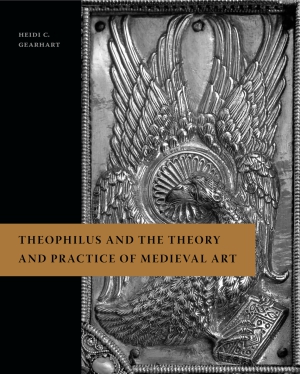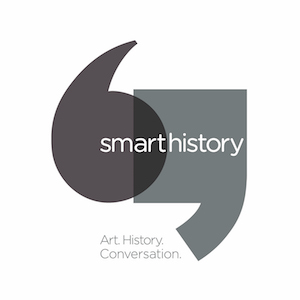CAA News Today
CAA Internship Program
posted by CAA — May 31, 2018
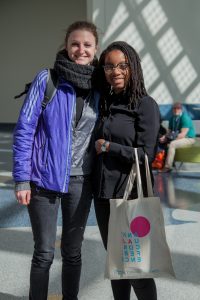
Attendees (art historian Julia Elizabeth Neal on the right) at the 2018 CAA Annual Conference in Los Angeles. Photo: Rafael Cardenas
Starting in September 2018, CAA will begin a new internship program in its New York office for undergraduate and graduate students and recent graduates. Specifically, the program is designed for those who wish to gain experience and develop skills in the following areas:
- Events and Conference Programming
- Publications and Digital Publications
- Marketing & Communications
- Membership Development
Each intern will be assigned a discrete, clearly defined project (or projects) to be completed during the internship period.
The number of hours will depend on the preference of the CAA department, but will generally expected to work 20-30 hours per week in CAA’s New York office sometime between the hours of 9:00AM to 6:00PM, Monday to Friday. All internships require a commitment of eight consecutive weeks. Interns are expected to be commit three days per week.
Eligibility
- Candidates must have successfully completed their junior year at an undergraduate college in any field of study.
- Candidates must have secure housing in the New York area which will allow them to complete the entire internship period.
- Candidates should have had some office experience and should be generally familiar with Microsoft Office, especially Word and Excel. Familiarity with Microsoft Office 365 preferable.
Internship sessions
- Fall 2018 – 8 weeks (September 15 through December 15)
- Spring 2019 – 8 weeks (January 15 through May 15)
- Summer 2019 – 8 weeks (June 1 through August 15)
There will be two interns per session.
Compensation
Each intern will receive a stipend of $500 per month paid bimonthly along with CAA’s regular payroll. Interns will be viewed as independent contractors and no deductions will be made, however a 1099 will be issued and interns are expected to pay all taxes as required under law.
Course credit
CAA will make every effort to assist successful candidates to obtain college credit, if applicable. Please coordinate with your institution’s administrator for semester credit. CAA can provide letters of confirmation and/or complete necessary forms.
To apply
Please submit a cover letter indicating your departmental interests (please rank two preferred departments), and CV to Daniel Tsai, CAA Programs and Publications Administrator: dtsai@collegeart.org. Please also list two professional references and the means to contact them via telephone or email. No phone calls please.
Applications will be accepted until positions are filled.
Events and Conference Programming Internship Tasks:
Assists with Annual Conference Special Events/Special Projects
- pre-conference workshops
- Key Conversation Panels
- events for students and emerging professionals
- Museum visits and tours
Assists with the research and facilitation of the Network Hall programming.
Assists with the research and development and implementation of workshops and programs throughout the year.
Publications and Digital Publications Internship Tasks:
- Assisting with checking layouts and copyediting
- Proofreading the reviews admin site to ensure uniformity of titles, format
- Checking all the links on Art Journal Open site to make sure they work
Marketing & Communications Internship Tasks:
- Editing and proofreading
- Visual design and layout assistance
- Social media
- Assembling press files
- Website review and content review
- Assembling press hits files
- Assembling digital metrics files
- General communications and strategy research
Membership Development Internship Tasks:
- Database cleanup
- Assist with membership growth strategy
- Renewal address file clean up
- Membership card file address clean up, folding cards, post office delivery
- Updating IP addresses indiv/org claims for missing issues
- Returned publications for indiv/orgs
- Adding/updating primary contacts for organizations
- Possible outreach to lapsed organizational members
The CAA is an equal opportunity employer and considers all candidates for employment regardless of race, color, sex, age, national origin, creed, disability, marital status, sexual orientation, gender expression, or political affiliation.
News from the Art and Academic Worlds
posted by CAA — May 30, 2018
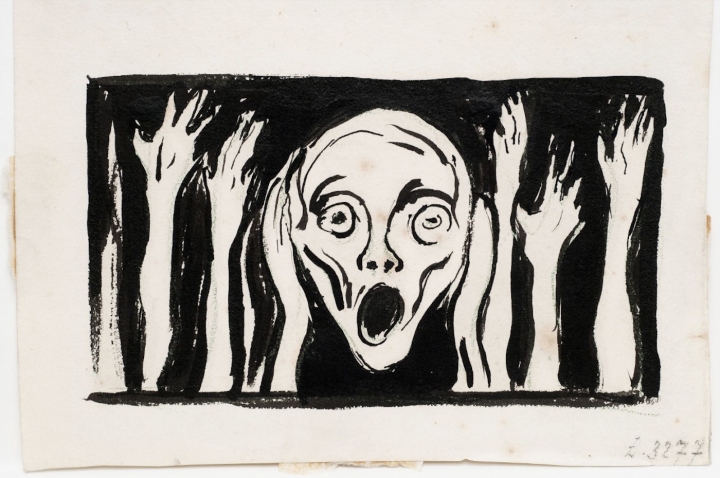
Edvard Munch, “Scream” Head and Raised Arms, ca 1898, via the Munch Museum website.
Amid Debate Over MOCA’s Future, Director Philippe Vergne Will Depart
The museum and director decided “by mutual agreement” not to renew Vergne’s contract when it expires in March 2019. (artnet News)
Return Persian Antiquity to Iran, New York District Attorney Says
The ancient limestone relief was seized from a London antiquities dealer last October. (The Art Newspaper)
Design Thinking Is a Boondoggle
“We shouldn’t pretend that we can boil education — indeed, all of human life — into a five-point diagram for selling stuff.” (Chronicle of Higher Education)
7,600 Edvard Munch Drawings Now Available to Discover Online
The Munch Museum in Oslo digitized not only its own holdings of Munch’s works on paper, but also those from other museums and private collections. (Hyperallergic)
How to Teach Your Children to Care about Art
Expert tips from arts professionals, educators, and museum workers. (Artsy)
Lost, Stolen, Blown Up and Fed To Pigs: The Greatest Missing Masterpieces
A gallery of lost works for optimistic treasure hunters. (The Guardian)
GLOBAL CONVERSATIONS 2018
posted by CAA — May 29, 2018
In 2018, the CAA-Getty International Program featured two main events: a preconference colloquium on February 20 on international issues in art history at which all twenty scholars participated, and an alumni conference session on February 23 that featured five CAA-Getty alumni and an American-based scholar’s response. Included below is the program for the February 20 colloquium, followed by the abstracts and respondent’s remarks for the February 23 alumni conference session.
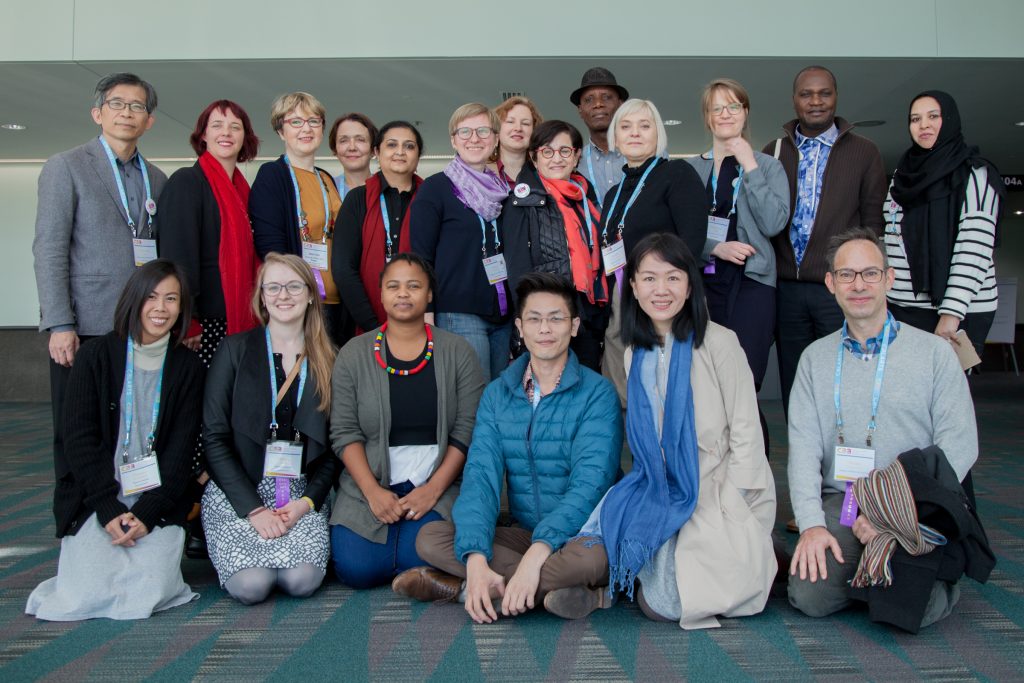
Now in its seventh year, the CAA-Getty International Program brought fifteen new participants and five alumni to the 2018 Annual Conference in Los Angeles. Click here to read their bios and learn more. Photo: Rafael Cardenas
PROGRAM
Global Conversations 2018
Preconference Colloquium
Tuesday, February 20, 2018
The Getty Center
8:30 AM Coffee, welcome, and introductions
9:15 AM Postcolonial and Eurocentric Legacies
Chair: Peju Layiwola, Artist and Professor of Art History, Department of Creative Arts, University of Lagos, Nigeria
Beyond the Readymade: The Use of Found Objects in Contemporary South African Art
Alison Kearney, Lecturer, University of the Witwatersrand (Wits), Johannesburg, South Africa
Resistance to Western Paradigms in East European and Latin American art from the late 1960s to 1989
Katarzyna Cytlak, Postdoctoral Researcher, Universidad Nacional de San Martín, Buenos Aires, Argentina
The Emergence of Taiwan’s Modern Visual Art and the Formation of Identity
Hsin-tien Liao, Dean of College of the Humanities, National Taiwan University of the Arts, Taipei, Taiwan
10:15 AM Global Trends in Museum Research and Exhibitions
Chair: Ildiko Feher, Associate Professor, Department of Art History, Hungarian University of Fine Arts, Budapest, Hungary
Digital Media Exhibition Curating in a University: the Case of the University of Port Harcourt Museum
John Agberia, Professor, University of Port Harcourt, Nigeria
Thinking Cross-culturally: Asian Art in a Visual Dialogue,
Markéta Hánová, Director of the Collection of Asian Art, National Gallery, Prague, Czech Republic
Gender Issues in Museums: Possibility, Provocation, Necessity?
Natalia Keller, Researcher of the Collection, Museo Nacional de Bellas Artes, Santiago, Chile
11:15 AM Interdisciplinary and Transnational Methodologies
Chair: Nomusa Makhubu, Senior Lecturer of Art History, Michaelis School of Fine Art, University of Cape Town, South Africa
Mirrors and the Invention of Perspective
Felipe Chaimovich, Chief Curator and Professor, Museo de Arte Moderna de São Paulo and Fundação Armando Álvares Penteado, Brazil
Experiments and Innovative Strategies in Croatian Photography during the 1960s and 1970s
Sandra Krizic-Roban, Senior Research Advisor, Institute of Art History, Zagreb, Croatia
Understanding African Art: an Interdisciplinary Exercise
Romuald Tchibozo, Senior Lecturer, University of Abomey-Calavi, Benin
12:15 PM Lunch
2:00 PM Cultural Identity, Politics, and the Powers of Art
Chair: Parul Pandya Dhar, Associate Professor of South and Southeast Asian Art History, Department of History, University of Delhi, India
Tracing the Cultural Ideology of the Indus Valley People
Sarah Umer, PhD Coordinator/Assistant Professor, Lahore College for Women, Pakistan
Datok Fatimah in Chinese Body: The Homely and Unhomely Presence of a Klang House Temple
Simon Soon, Senior Lecturer, Visual Art Department, University of Malaya, Kuala Lumpur, Malaysia
Reenergized by the Maidan: A Conjunction of Art and Politics
Natalia Moussienko, Leading Research Fellow, Modern Art Research Institute, National Academy of Arts, Kyiv, Ukraine
3:00 PM Considering an International Art History Curriculum
Chair: Cezar Bartholomeu, Artist and Professor of Art History, School of Fine Arts, Universidade Federal do Rio de Janeiro, Brazil
Terminology and Methodology in Teaching Asian Art to Russian Art History Students
Anna Guseva, Associate Professor, Higher School of Economics, St. Petersburg, Russia
A Chinese Perspective on Cross-cultural Transmissions of Art History
Chen Liu, Associate Professor, Tsinghua University, Beijing, China
Translation and Change: Teaching Art History in Thailand
Thanavi Chotpradit, Silpakorn University, Bangkok, Thailand
4:00 PM Open discussion
Moderator: Steven Nelson, Professor of African and African American Art and Director of the UCLA Center for African Studies
5:00-6:30 PM Cocktail Reception
Eileen MacAvery Kane and Herman Botes
posted by CAA — May 28, 2018
The weekly CAA Conversations Podcast continues the vibrant discussions initiated at our Annual Conference. Listen in each week as educators explore arts and pedagogy, tackling everything from the day-to-day grind to the big, universal questions of the field.
This week, Eileen MacAvery Kane and Herman Botes discuss ethics and graphic design.
Eileen MacAvery Kane is a full-time instructor in the Art Dept. at Rockland Community College in Suffern, NY as well as the author of Ethics: A Graphic Designer’s Field Guide and blog ethicsingraphicdesign.org.
Herman Botes serves as Head of the Department of Visual Communication at Tshwane University of Technology (TUT) in Pretoria, South Africa. He has a forthcoming co-authored book Educating Citizen Designers in South Africa, due out in 2018.
New in caa.reviews
posted by CAA — May 25, 2018
Kate Dimitrova reviews Theophilus and the Theory and Practice of Medieval Art by Heidi C. Gearhart. Read the full review at caa.reviews.
Michelle Millar Fisher writes about SmartHistory.org. Read the full review at caa.reviews.
An Interview with Jim Hopfensperger, the New President of CAA
posted by CAA — May 24, 2018
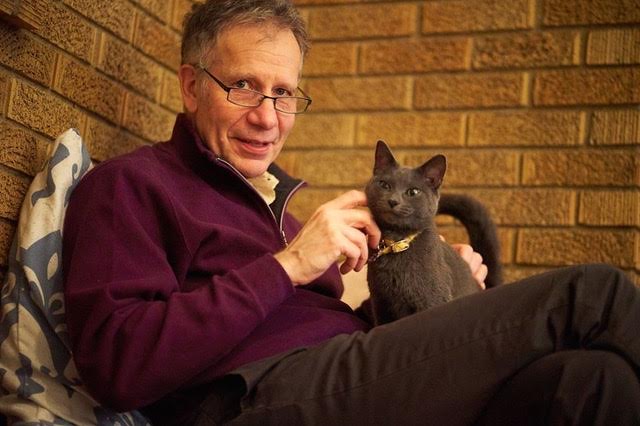
Jim Hopfensperger at home.
As of this month, Jim Hopfensperger, professor of art at Western Michigan University’s Gwen Frostic School of Art, is CAA’s new president for the 2018-2022 term. As a professor and artist with a wealth of experience, we thought it would be a great opportunity to ask Jim his thoughts on CAA and the field at-large. CAA media and content manager Joelle Te Paske spoke with him earlier this month.
JTP: Hi Jim! Thanks so much for speaking with me. How are you?
JH: Very well, Joelle. Thank you so much for taking the time to visit!
JTP: To get us oriented, where did you grow up?
JH: My spouse, Jane, and I were raised in the upper Midwest. While career choices took us to Pennsylvania and Massachusetts, we returned “home” to Michigan eighteen years ago to be nearer aging family members.
JTP: And what did you study?
JH: I was educated as a craftsperson, working primarily in non-ferrous metals such as silver, gold, and copper. During a sabbatical leave from my faculty position at Penn State University in the early 1990s, I was presented the opportunity to work in a furniture studio in Massachusetts. Within a few weeks I was totally hooked, gifting my metal working tools to a younger artist and moving forward as a furniture maker.
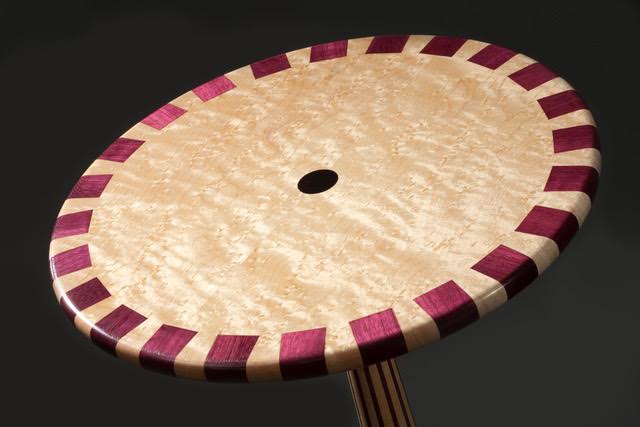
Jim Hopfensperger, Shaker Purple, 2012
JTP: What drew you to the work you do now?
JH: I am drawn to how creating art/design objects—one-at-a-time and by hand—reinforces and reaffirms what it means to be a human being. Thinking with my hands, my eyes, and my mind to conceive well-designed and useful articles makes me feel whole. Perhaps I am a kinesthetic thinker/learner? It also seems possible that, for better and for worse, my sense of self is simply anchored in making things. The non-existent term “neuroceutical therapy” comes to mind!
JTP: What is exciting to you as the incoming CAA president?
JH: The forces of change are in motion all around us. It is a truly exhilarating time to be in the business of living!
As for CAA, a raft of research suggests that healthy organizations prosper when focusing efforts along two key pathways: 1) identifying and strengthening essential core competencies and 2) systematically exploring future capacities. This means sustaining CAA’s outstanding programs and services while simultaneously identifying the organization’s next purposes. Full attention to both matters seems essential if we are to extend a highly distinguished history of advocacy for artists, art historians, scholars, curators, critics, designers, collectors, and educators. I am grateful for this opportunity and excited about the work ahead.
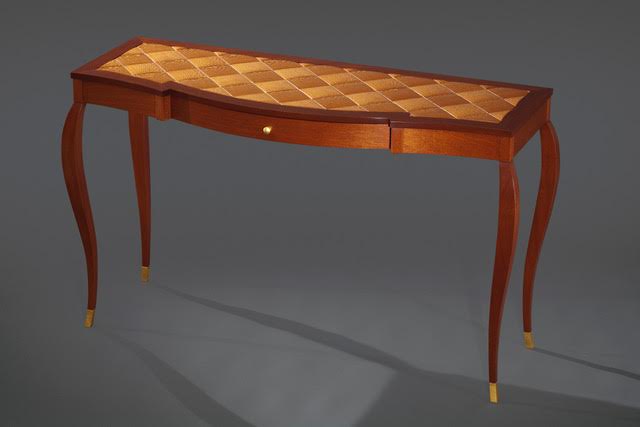
Jim Hopfensperger, Deliberation No. 7, 2005
JTP: What work has been done over the past few years that you would like to build on? What would you like to see happening at CAA in the next year? How about in the next ten?
JH: Clearly, CAA remains an eminent learned society. At the same time it is increasingly fulfilling its potential as a professional association that serves members across educational, curatorial, scholarly, and creative pursuits. In the short term I am confident CAA will remain a strong association and identify more ways to support members in their professional lives.
Over the next few years a pivot toward some key constituencies might make strategic sense. Those include 1) the burgeoning ranks of contingent employees upon whom educational and cultural institutions have become increasingly reliant; 2) the large number of design and new/emerging media practitioners graduating from art and design programs; and 3) the community of international scholars, artists, and designers steadily advancing global perspectives. I look forward to working with CAA members, staff, board, and other stakeholders to map a future wherein these colleagues will be well served.
JTP: What has been a memorable professional moment for you at a CAA Annual Conference?
JH: I am deeply invested in the fellowship aspects of CAA. My fondest memory involves mentoring in the Professional Development Workshops at the Annual Conference in 2000. One my mentees was, as I, trained as a metalsmith. We worked closely after that conference to identify strategies for achieving his professional goals, and he eventually accepted a splendid academic position. In return for my service, and for each of the past eighteen years uninterrupted, he has gifted to me a handcrafted metal ornament to hang on our family holiday tree. Simply precious! (And if you are reading this Professor James Thurman, a wholehearted “Thank You!” is long overdue.)
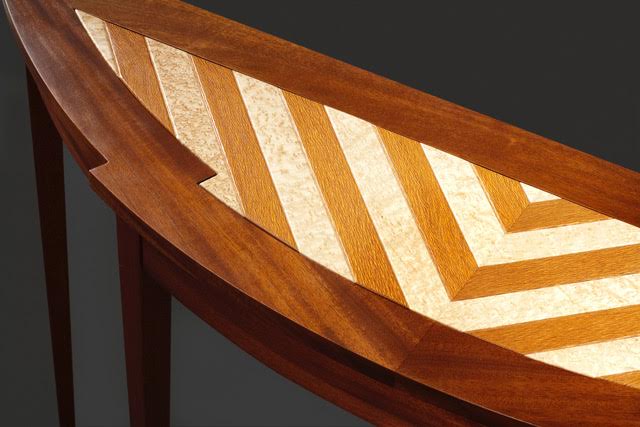
Jim Hopfensperger, Deliberation No. 9, 2013
JTP: What would you say is the number one challenge facing higher education?
JH: Excellent question. My two cents: Adapting to the startling, inevitable pace of cultural and technological change is an operational necessity. Yet, communicating the value of an educated populace appears to be our most immediate and pressing challenge. Making the case for the causal relationship between educational opportunities and the ascendance of an increasingly ethical, moral, and empathetic society is job one. In the absence of such a mission statement, it is not difficult to imagine financial or economic ‘values’ easily filling the void.
The logical outcome might then resemble Oscar Wilde’s timeless quip about a cynic being ‘a man who knows the price of everything and the value of nothing.’
JTP: Do you have a favorite artwork?
JH: I have a keen interest in all forms of applied design—dynamic and surprising buildings, objects, communications, products, and processes. However, and for reasons I am not fully able to explain, my favorite artwork is Monet’s Four Trees in the Met’s collection. This quiet little companion and I visit perhaps once every 12 to 24 months. Invariably, I leave our encounters refreshed and restored.
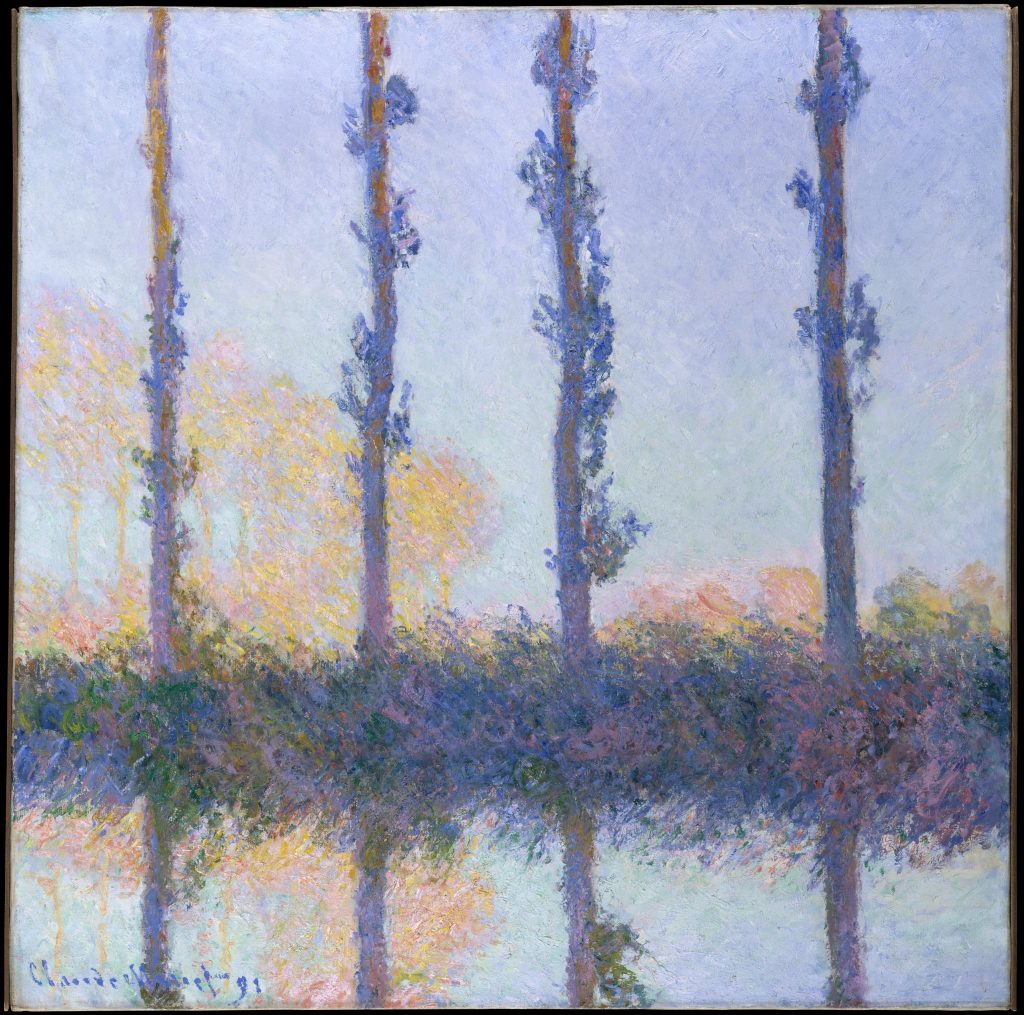
Claude Monet, The Four Trees, 1891, oil on canvas, 32 1/4 x 32 1/8 in. (81.9 x 81.6 cm) Collection of The Metropolitan Museum of Art. Image: Wikimedia Commons
JTP: What about a favorite book?
JH: Much of my reading over the past decade can be described as a search for serviceable maps of the human mind, followed by rubbernecking at accidents caused by irrational behaviors. Daniel Kahneman’s Thinking Fast and Slow is a fine example of the former, the type of mind mapping I find highly addictive. Kahneman’s lenses for understanding our extraordinary capabilities, while simultaneously identifying those pesky faults and deep biases that accompany human thought and action, help structure my own thinking. In a related way writings on decision-making in everyday life are equally intriguing and useful. Charles Duhiggs’s The Power of Habit, Dan Ariely’s Predictably Irrational, Keith Payne’s The Broken Ladder successfully illustrate complexities and contradictions when/where supposedly rational thoughts and human actions intersect, often to hilarious and/or tragic effect—endlessly fascinating stuff!
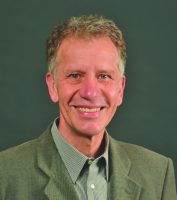
Jim Hopfensperger is a professor of art at Western Michigan University’s Gwen Frostic School of Art where he teaches foundation art. Jim’s art works have been shown nationally and internationally in over 100 exhibitions at venues including the Detroit Institute of Arts, Nelson-Atkins Museum of Art, Auckland Memorial Museum, Lever House, University of Iowa Museum of Art, University of Oregon Museum of Art, State Museum of Pennsylvania, North Carolina Museum of History, and National Ornamental Metals Museum.
Jim’s past appointments include serving as Senior Associate Dean in the College of Fine Arts at Western Michigan University, Chair of the Department of Art & Art History at Michigan State University, and Head of the Studio Art Program at The Pennsylvania State University. He has also taught at the Massachusetts College of Art, University of Massachusetts-Dartmouth, Skidmore College, University of Michigan, and North Carolina State University.
Jim is Past President of the National Council of Arts Administrators, and is an accreditation visitor for the National Association of Schools of Art and Design. He earned a MFA from University of Michigan, a MA from University of Illinois at Urbana-Champaign, and a BA from Michigan State University.
News from the Art and Academic Worlds
posted by CAA — May 23, 2018
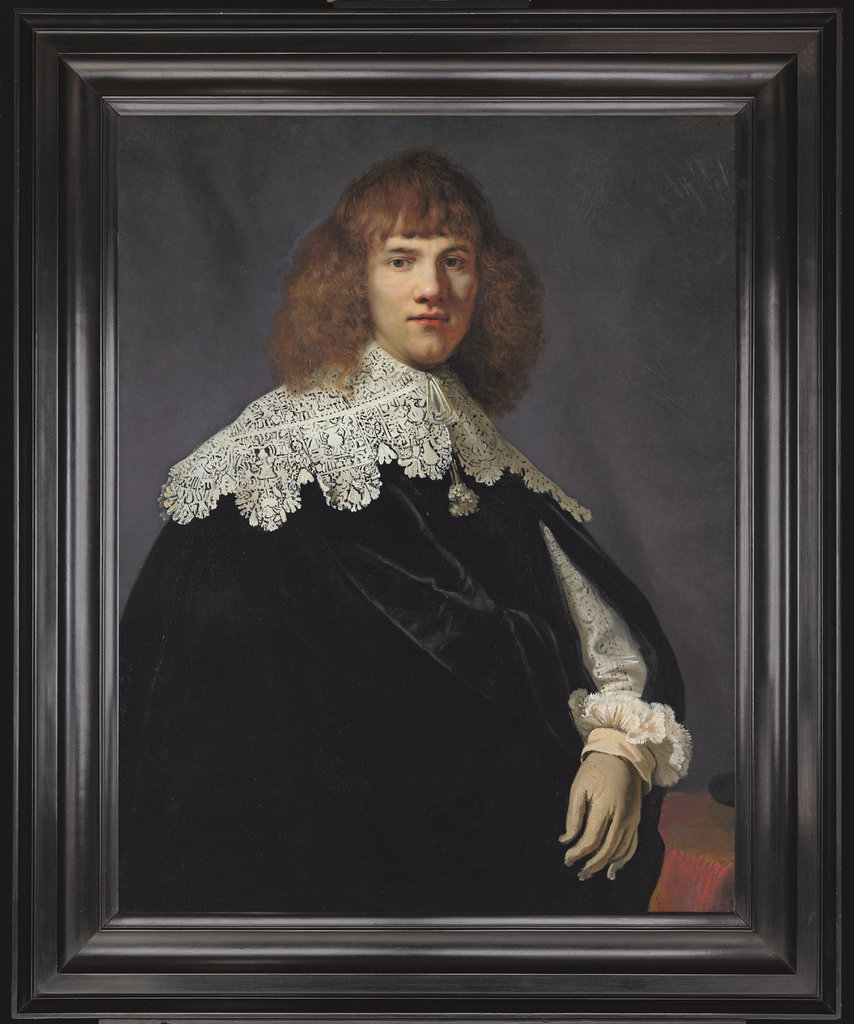
The Dutch art dealer Jan Six says that Portrait of a Young Gentleman is by Rembrandt, and several high-profile experts agree. Credit: René van Gerritsen/Jan Six Fine Arts, via NYT
A New Rembrandt? A Dutch Art Dealer Says He’s Found One
Portrait of a Young Gentleman would be the first wholly unknown Rembrandt painting to be attributed in 44 years. (New York Times)
Opinion: Let’s End Commencement
Clemon University professor Jonathan Beecher Field shares his view on why the mass commencement ceremony is a ritual that should be replaced. (Inside Higher Ed)
How Do You Conserve Time-Based Media? Museums Invest in Research to Keep Up with New Technologies
Time-based media art conservation is seeing a surge in interest in funding and formalization. (The Art Newspaper)
The Vatican in Venice (And a Cardinal Who Walks on the Wild Side)
The Catholic Church’s debut pavilion at the Venice Architecture Biennale will consist of 10 full-scale chapels built on an island in the Venice lagoon. (The Guardian)
Naima J. Keith and Diana Nawi to Curate Prospect.5 in New Orleans
The city’s contemporary arts triennial is slated to open in the fall of 2020. (Artforum)
Is It Even Possible to Comprehend a Work of Art Without Seeing a Woman Next to It (for Scale)?
Ben Davis & Julia Halperin examine an enduring and strange stock photo phenomenon. (artnet News)
Thank You to our Long-time Members
posted by CAA — May 22, 2018
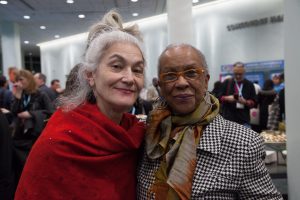
Attendees at CAA 2018 (Professor Awilda Sterling-Duprey on the right). Photo: Rafael Cardenas
A senior scholar recently received a notice asking her to renew her CAA membership. She nicely wrote back to our membership department and suggested that perhaps CAA could offer a complimentary lifetime membership to those who had been long-time members. It was a good idea.
We brought her suggestion to the Board of Directors and they unanimously agreed. Beginning immediately, all CAA members who have been members of the organization for more than 40 years (not consecutively) shall receive a lifetime membership in CAA.
Members should have a current active membership to receive this benefit. Qualified members, please contact membership services Member Services or call 212-691-1051, ext. 1. to upgrade your membership.
Remember, this is your organization and your suggestions and feedback are how we make it stronger together.
Affiliated Society News for May 2018
posted by CAA — May 22, 2018
Affiliated Society News shares the new and exciting things CAA’s affiliated organizations are working on including activities, awards, publications, conferences, and exhibitions. For more information on Affiliated Societies, click here.
International Sculpture Center (ISC)
ISC is offering new graduates the professional resources they need to launch their careers – Student/Young professional membership – at discounted rate of $45. For more info, visit https://www.sculpture.org/documents/aboutisc/specialoffers.shtml
ISC is now accepting applications for our Fall/Winter residency @ Mana Contemporary. Apply today https://www.sculpture.org/residency/mana-update.shtml
Registration opens in June for the 28th ISC Conference: Defining Moments in the Face of Change and is available to ISC members, non-members, students, and all those with an interest in sculpture. Come join us in Philadelphia for engaging panel discussions, networking events, and exciting tours & optional activities. https://sculpture.org/philly2018/
Association of Art Museum Curators (AAMC)
The Association of Art Museum Curators and AAMC Foundation is honored to present a series of three webinars on research, advances, and issues surrounding the topic of provenance. With the establishment of substantial research databases and resources, great progress has been made in researching artworks that may have been subject to unlawful appropriation during the World War II era. As museums work to make their collections accessible online, there is both the need and potential to extend these advances to other categories of objects. The first webinar will acknowledge the impact of the pioneering work in WWII era research and provide updates on the current status within the field. The second session will offer a review of work currently being undertaken for non-WWII era looting and specifically looking at fields, including but not limited to, African Art, Asian Art and Antiquities. In the final session, we will emphasize the interest and need for progress in collaboration across diverse fields, present information on sharing data, and digitization and resources in communicating knowledge. The three webinars will build from seminar to seminar, but do not require attendance at each one to gain value from an individual session. Scheduled over three Tuesdays this June 2018, registration is available at a purchase of a single session or package of all three. Members and non-members alike can register directly online, with group rate packages available to participate. Access to webinar recordings will also be available for viewing with purchase. The first webinar on June 12 is Advances in WWII Era Research; the second on June 19 is Going Beyond WWII Era Research; and the third on June 26 is Sharing Research, Asking New Questions. Register to participate today.
Association of Print Scholars (APS)
The Association of Print Scholars hosted its third annual Distinguished Lecture at the CUNY Graduate Center on January 26, 2018. The curator Rémi Mathis, of the Bibliotheque Nationale de France, delivered the lecture titled “A Means to an End: The Process of Understanding French Prints.”
During the CAA conference in Los Angeles, many members joined us for our affiliated society panel, “Now you see it, now you don’t: Materialism and Ephemeral Prints,” chaired by Dr. Yasmin Railton of Sotheby’s Institute of Art. We also hosted a member’s reception at the East Los Angeles based workshop Self Help Graphics and toured their exhibition on Día de los Muertos.
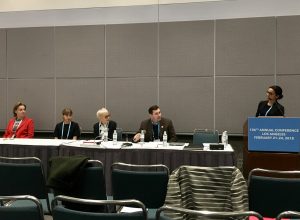
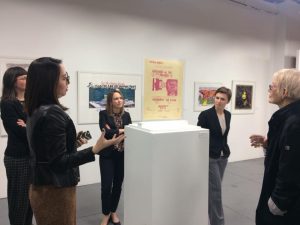
APS is pleased to announce our 2019 CAA panel “Printing Color: Reproducing Race Through Material, Process, and Language,” chaired by Christina Michelon. Michelon is a Luce /ACLS Fellow in American Art and a PhD Candidate in Art History at the University of Minnesota-Twin Cities where she is completing her dissertation “Interior Impressions: Printed Material in the Nineteenth-Century American Home.” Her work has been supported by the Smithsonian Institution, the Winterthur Museum & Library, the Center for Craft, Creativity, and Design, the American Antiquarian Society, and the Chipstone Foundation. “Printing Color: Reproducing Race Through Material, Process, and Language” seeks to investigate the racialized dimensions of print and printmaking. The medium has played a central role in the ideological founding of “race” and its hierarchies through visual representation. However, print’s materials, processes, and the language we use to describe them interface with conceptions of race in ways that require further study. Please be on the lookout for our upcoming CFP.
Society of Historians of Eastern European, Eurasian, and Russian Art and Architecture (SHERA)
The Board of the Society of Historians of Eastern European, Eurasian, and Russian Art and Architecture (SHERA) is pleased to announce the SHERA-sponsored panel for the 50th Annual ASEEES Convention in Boston, MA, December 2018. Dr. Hanna Chuchvaha’s panel “The Passion for Collecting: Collectors and Their Collections in Imperial Russia, 1800-1917” will include papers on Zinaida Volkonskaia’s Allée de Souvenirs (Laura Schlosberg), Print Collections of Female Crafts in Late Imperial Russia (Hanna Chuchvaha), Reform and Rehang in the Tretyakov Gallery, 1913-1917 (Isabel Stokholm) and will be of interest not only to art historians but also to scholars of museology, women’s studies, and visual culture.
Association for Modern and Contemporary Art of the Arab World, Iran, and Turkey (AMCA)
Book Launch Events: “Modern Art in the Arab World: Primary Documents” (April 28 Beirut and May 23 New York)
AMCA is pleased to announce launch events in Beirut (Sursock Museum) on April 28 and in New York (MoMA) on May 23 to celebrate the publication of Modern Art in the Arab World: Primary Documents (2018), edited by Anneka Lenssen, Sarah Rogers, and Nada Shabout. Both events bring to life Modern Art in the Arab World: Primary Documents and the book’s diverse content, multiple collaborators, and rich source materials that aim to further the study of modernism in a global frame.
This anthology offers an unprecedented resource for the study of modernism: a compendium of critical art writings by 20th-century Arab intellectuals and artists. The selection of texts—many of which appear for the first time in English—includes manifestos, essays, transcripts of roundtable discussions, diary entries, exhibition guest-book comments, and letters. Traversing empires and nation-states, diasporas and speculative cultural and political federations, the documents bring to light the formation of a global modernism that includes debates on originality, public space, spiritualism and art, postcolonial exhibition politics, and Arab nationalism. The sourcebook is framed chronologically, and features contextualizing commentaries and essays to assist readers in navigating its broad geographic and historical scope. A newly commissioned essay by Ussama Makdisi provides a historical overview of the region’s intertwined political and cultural developments during the 20th century.
Speakers included:
Zeina Arida, director of the Nicolas Ibrahim Sursock Museum in Beirut
Iftikhar Dadi, associate professor in the Department of The History of Art and Visual Studies at Cornell University
Anneka Lenssen, assistant professor of Global Modern Art in the History of Art Department at the University of California, Berkeley.
Glenn D. Lowry, director of The Museum of Modern Art in New York.
Sarah Rogers, independent scholar.
Nada Shabout, professor of art history in the College of Visual Arts and Design and the coordinator of the
Contemporary Arab and Muslim Cultural Studies Initiative at the University of North Texas.
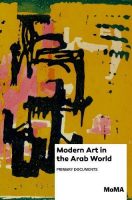
Explore source documents for Modern Art in the Arab World
AMCA has made a number of primary documents in Arabic and French available online. Click here to explore.
The Feminist Art Project (TFAP)
Call For Papers
The Feminist Art Project’s Day of Panels will be co chaired by Christen Clifford and Jasmine Wahi. The Day of Panels will be held at the Hilton in NYC at CAA on Feb 16th, 2019. The 2019 symposium will focus on rape and representation. The co-chairs are looking for papers, video and art that dwell in the sexual wounds of rape and sexual assault and look for the light of sexual justice. We seek a wide array of proposals on possible topics such as rape and representation, the meanings of sexual justice, gender and power in the art world, intersectional feminisms and responses to assault.
How has sexual assault affected feminist art practices? Who has power and why? What institutional changes need to happen to work towards sexual justice? Feminist art has long dealt with the oppressions and violations of colonialism, slavery, and couverture. TFAP 2019 is dedicated to the exploration of sex, power and justice through intersectional art and activism, academics and healing, and creating a shared space: bringing intellect and emotion together to demand bodily autonomy.
The day of panels will feature panels, video art, and a digital gallery.
Paper, panel and performance proposals should include a short (100 word) abstract /description of work, 100 word bio, and any relevant links. Header should read: TFAP 2019 Paper
Video and Image submissions should include links (and passwords, if appropriate) and up to 5 images. Please use email headers: TFAP 2019 Video or TFAP 2019 Image. All images should be labeled: LASTNAME_FIRSTNAME_TFAP.jpg
Please send proposals to
By June 14th.
Association of Academic Museums & Galleries (AAMG)
By popular demand, we’ve expanded the registration capacity for the AAMG Bootcamp Workshop. To add the workshop to your existing conference registration, please email membership@aamg-us.org
What: AAMG Bootcamp for Academic Museums
Where: Lowe Art Museum, University of Miami
When: Thursday, June 21, 9am – 3pm
with Jill Hartz and Barbara Rothermel Lowe Art Museum, University of Miami
Only open to AAMG and UMAC members; $100 (lunch and materials included)
This intensive professional development workshop covers key concepts and practices in academic museum management. Whether you’re a seasoned professional or new to the field, the workshop offers opportunities to learn about innovative and best practices and share challenges and achievements. We’ll cover mission and governance, advisory boards, strategic planning, our teaching role, working with faculty and students, community relations, and collections management and planning.
Instructors: Jill Hartz, Executive Director, Jordan Schnitzer Museum of Art, University of Oregon / President Emeritus, AAMG Barbara Rothermel, Director, Daura Gallery, Lynchburg College / Vice-Chair, UMAC
Association of Historians of American Art
Panorama: Journal of the Association of Historians of American Art has received an $8,500 grant from the Wyeth Foundation for American Art. A peer-reviewed, open-access online journal dedicated to American art and visual culture in all media, from the colonial period to the present day, Panorama welcomes submissions in various formats, including feature length articles (7,000-10,000 words), research notes (maximum of 2,500 words), book and exhibition reviews, and “Bully Pulpit” suggestions—texts that trace a conversation or debate on a topic that is of general interest to the field.
New Media Caucus (NMC)
The New Media Caucus (NMC) is pleased to announce the inaugural Advisory Board. Voted in by the Board of Directors, the members of the Advisory Board will assist with the core missions and the growth of the caucus. We welcome Hasan Elahi, internationally recognized media artist and Associate Professor of the University of Maryland; Sue Gollifer, pioneer of early computer art, Director of ISEA International and academic staff at the University of Brighton in the UK; and Guna Nadarajan, theorist, curator, and Dean and Professor at the Penny W. Stamps School of Art and Design at the University of Michigan. We look forward to working with, and learning from, our esteemed colleagues.
Society of Architectural Historians (SAH)
The Society of Architectural Historians has received a three-year, $120,000 grant from The Richard H. Driehaus Foundation for general operating support. The grant provides SAH with vital unrestricted income needed to fulfill its educational mission and support day-to-day operations.
The Society of Architectural Historians announced the 2018 recipients of the SAH Publication Awards and the SAH Award for Film and Video at its 71st Annual International Conference awards ceremony on April 20, at the Landmark Center in Saint Paul, Minnesota. The SAH Publication Awards honor excellence in architectural history, urban history, landscape history and historic preservation scholarship as well as architectural exhibition catalogues. The SAH Award for Film and Video is an annual award that was established in 2013 to recognize the most distinguished work of film or video on the history of the built environment. SAH will begin accepting nominations for the 2019 awards on June 1, 2018.
SAH is accepting applications for the 2018 SAH/Mellon Author Awards, designed to provide financial relief to scholars who are publishing their first monograph on the history of the built environment. The application deadline is May 31, 2018.
SAH is accepting abstracts for its 72nd Annual International Conference in Providence, Rhode Island, April 24–28. The submission deadline is 11:59 pm CDT on June 5, 2018. View the full call for papers at sah.org/2019.
International Association of Art Critics United States (AICA-USA)
AICA-USA‘s 2018 annual meeting was Saturday, May 19 at The Brooklyn Rail Headquarters at Industry City in Sunset Park, Brooklyn. The meeting coincided with a panel discussion featuring David Salle and Carroll Dunham.
AICA-USA board member Phong Bui says: “Ever since Susan Harris was the guest critic for the Rail’s November 2016 issue, which featured a luminous selection of our writer colleagues who are AICA members and board members, we have kept the collaboration alive with many AICA writers contributing regularly to our Art Seen reviews, such as Barbara and Alfred MacAdam, Lilly Wei, Eleanor Heartney, Amei Wallach, and Susan herself as an ongoing effort to keep the collaboration alive.
On the occasion of our forthcoming event featuring David Salle and Carroll Dunham on their respective publications, How to See and The Collected Writings of Carroll Dunham, I thought it would be a timely occasion to create a panel discussion coinciding with Industry City’s Open Studios, which invites the local artist community to participate.”
David Salle in Conversation with Carroll Dunham, moderated by Phong Bui
Panelists: Josephine Halvorson, Adam Pendleton, Martha Schwendener, and Amei Wallach
Rail HQ
253 36th Street, Suite C304
Industry City in Sunset Park
Saturday, May 19
Coffee and bagels: 10:30am
Conversation: 11am–12:30pm
AICA-USA Business Meeting: 12:30–1:00pm

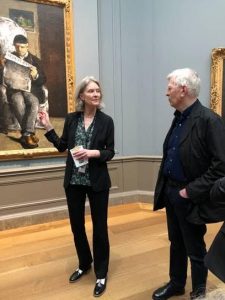

On May 8 and 9, 2018, AICA-USA members gathered in Washington D.C. for a two-day visit. 2017 AICA-USA Distinguished Critic Lecturer Paul Chaat Smith led members through his much-lauded exhibition, Americans, at the National Museum of the American Indian in Washington DC. AICA-USA member John Elderfield and his colleague Mary Morton led members through the exhibition Cézanne Portraits, which they co-curated at the National Gallery of Art.
The group also toured Lynn Cooke’s exhibition Outliers and American Vanguard Art at the National Gallery. AICA-USA was fortunate to have been granted ten VIP passes for entry to the National Museum of African American History and Culture, which members enjoyed without having to undergo the typical long wait time for entry passes.
Association for Textual Scholarship in Art History (ATSAH)
Recent member’s publications
Charles Burroughs, “Botticelli’s Stone: Giorgio Vasari, Telling Stories, and the Power of Matter.” Artibus et Historiae 76 (2017): 297–325.
Liana De Girolami Cheney, “Giorgio Vasari’s planetary ceiling: A Neoplatonic Voyage.” In Artistic Responses to Travel in the Western Tradition, ed. Sarah J. Lippert (London: Routledge Research in Art History, 2018): 158-169.
Karen Hope Goodchild, “Masaccio, Andrea del Sarto, Il Lasca, and the Sausage School of Florence.” Source. Volume 36, number 3/4 (Spring/Summer 2017): 178-187.
Sarah J. Lippert, ed. Artistic Responses to Travel in the Western Tradition
(London: Routledge Research in Art History, 2018).
ANNOUNCEMENT AWARDS for Students and Scholar
ASSOCIATION FOR TEXTUAL SCHOLARSHIP IN ART HISTORY
In commemoration of our 30th anniversary, ATSAH plans to offer two awards: one prize for the best article by an emerging scholar (no higher than Associate level). The topic may range from classical to Pre-Raphaelite art, reflecting the aims of ATSAH. The second is a small travel grant for junior scholar presenting a paper an ATSAH session. The board of ATSAH selects these awards.
For further data, contact:
Liana Cheney, PhD, President of ATSAH,
lianacheney@earthlink.net
SECAC
Lawrence Jenkens, 1st Vice-President and ex-officio chair of the SECAC Nominating Committee is pleased to announce the election of the following members to the SECAC Board of Directors for a three-year term of appointment that begins immediately: For Alabama, Wendy DesChene, Professor of Art, Auburn University; for Kentucky, Eileen Yanoviak, Director of the Carnegie Center for Art and History, New Albany, Indiana; for Louisiana: Jill R. Chancey, Assistant Professor of Art History, Nicholls State University, Thibodaux, Louisiana; for North Carolina: Kathryn Shields, Associate Academic Dean, Guilford College, Greensboro, North Carolina; and for the Third At-large Seat: Claire L. Kovacs, Director, Augustana Teaching Museum of Art, Augustana College, Rock Island, Illinois.
Community College Professors of Art and Art History (CCPAAH)
The Community College Professors of Art and Art History will have two opportunities to submit presentations for our panels next year. Please watch the news from CAA to submit a proposal for our session at next year’s conference in New York. We will also have an opportunity to submit for our panel at the FATE (Foundations in Art Theory and Education) Conference in Cincinnati next spring. Watch both of their websites for more information and the details for submissions. For more information contact Susan Altman, ccpaah@gmail.com
Foundations in Art: Theory and Education (FATE)
http://www.foundations-art.org/
FATE’s 17th Biennial Conference will be hosted by Columbus College of Art & Design in Columbus, Ohio on April 4th-6th, 2019. The call for sessions closed on May 18, but conference organizers will soon be seeking paper proposals for panel discussions and workshop events surrounding the conference theme, Foundations in Flux. http://www.foundations-art.org/conferences
Positive Space is FATE’s bi-monthly podcast providing opportunities for those passionate about art foundations to discuss and promote excellence in the development and teaching of college level foundations in art & design studio and history classes.
In Episode 30, of FATE’s Positive Space podcast we discuss creative detours, the mystery of art, becoming comfortable in your own skin, and the habit/repetition, and courage it takes to make things, with artist & educator, Gary Setzer, Associate Professor, Division Chair of the First Year Experience at the University of Arizona.
Episode 29 is a discussion about experimentation. Everyone talks about it, but practical examples of how to implement experimentation within our creative studios/classroom spaces are rarely deeply examined. Lily Kuonen, Associate Professor & Foundations Coordinator at Jacksonville University, discusses her artwork which she describes as PLAYNTINGS (play + paintings) and how the element of playful experimentation has become a crucial aspect of her teaching pedagogy.
Episode 28 was recorded live at the FATE panel at the 106th Annual College Art Association Conference held in Los Angeles, moderated by Naomi Falk, the FATE CAA Representative.
If you have podcast ideas, contact us!
Positive Space has a phone number: 904-990-FATE. Give us a call & record a message today or visit: http://www.foundations-art.org/positive-space-podcast
Membership: Starting the 2018/2019 membership period, FATE has made changes to the Individual Membership fees including a new Adjunct Faculty Membership rate for part-time and contingent faculty members: http://www.foundations-art.org/membership
Your Feedback on the 2018 Annual Conference
posted by CAA — May 21, 2018
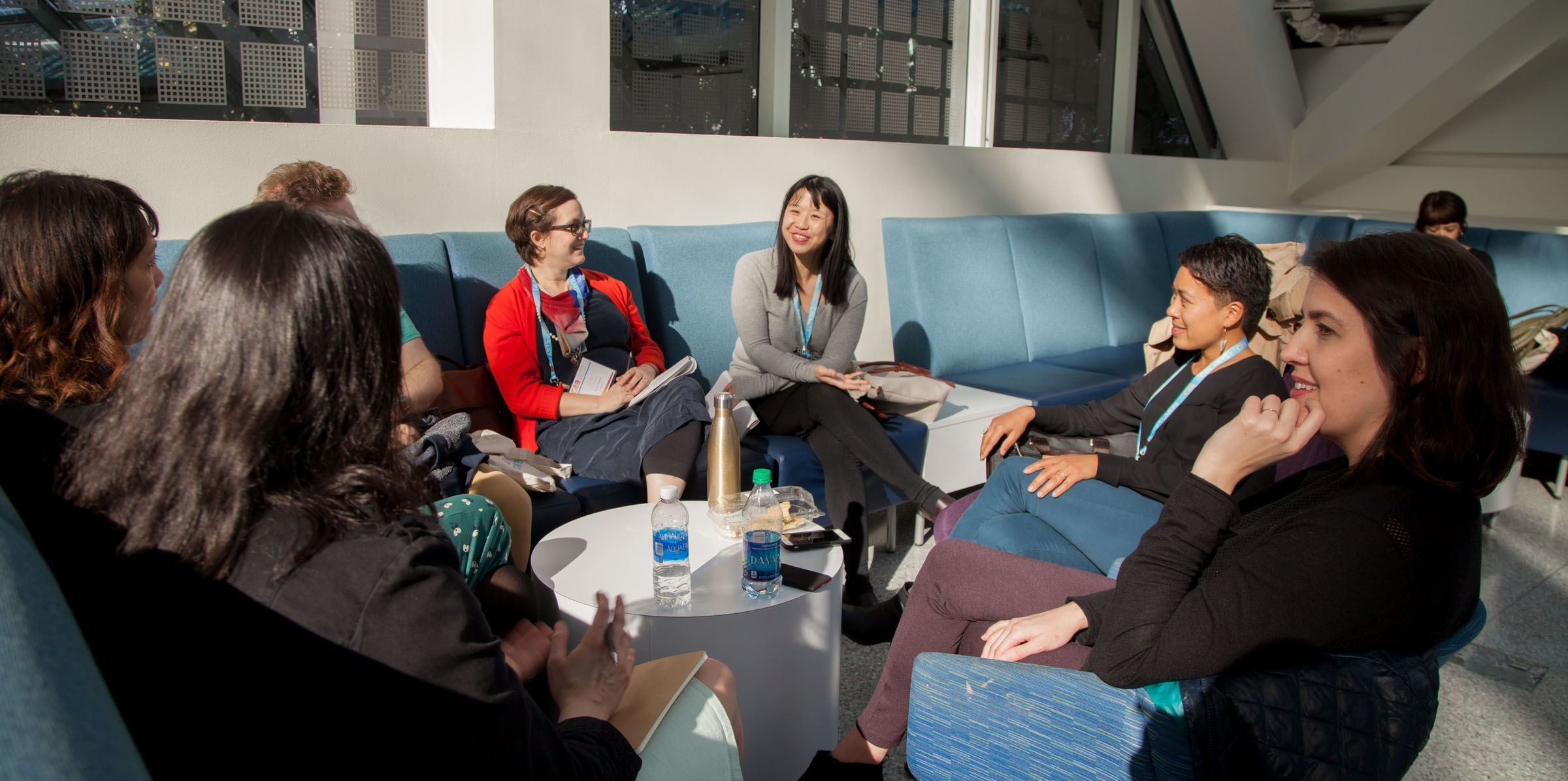
Attendees at the 2018 Annual Conference. Image: Rafael Cardenas
Artists and scholars are members of CAA because of the connections they form at our Annual Conference. But putting together an Annual Conference is no small task. The process to plan and execute the CAA Annual Conference takes the CAA staff and committees nearly a full year. You might have noticed that we opened the portal for session submissions for the 2019 Annual Conference in New York, February 13-16, just five days after we ended the LA meeting.
We received nearly 1,000 submissions for the 2019 Annual Conference – the highest number in CAA’s history. We had more than 4,200 attendees in Los Angeles. We hope to see more than 5,000 in New York.
As we set ourselves to planning CAA 2019, we take into consideration your ideas and comments. Working from feedback from the Annual Conference survey and from conversations in person we will make the NYC meeting even better.
Here is what you told us:
- More than 73% were satisfied with the 2018 Annual Conference, so that means we will keep doing a lot of the things that we do. However, many of you hated the Los Angeles Convention Center and the distance from the hotels. This is not something we plan to do again.
- There were a few problems with onsite registration and we are re-thinking how we perform this function. Even though we have a seasoned staff in this area, it is only something done once a year and we only do it for three days. That is not an excuse; it’s just that we have to get it perfect on the first day.
- About two thirds of those who attended were art historians or curators. One third of you are practicing artists. 76% of you are associated with a college or university. That tracks closely to our overall membership. Designers have said that they want to participate and you will see that we will have more offerings for them in the years to come.
- You like the phone app and the positive, welcoming feeling at the Annual Conference and the diversity of sessions. The 90-minute sessions seem to be popular. Many of you like the off-site events and enjoyed going The Getty, The Broad, The Huntington Library, and The Hammer Museum. We will continue to offer off-site events. The Book and Trade Hall remains popular. You liked hearing Catherine Opie and Helen Molesworth.
- Some of you were frustrated that there were several sessions happening on the same topic at the same time. We hate when that happens as well, and we do everything we can to avoid it. The problem is that some panelists have no flexibility in their schedule and we are forced to offer the sessions at the times the panelists can be there. But trust us, we will continue to try to not schedule topics on the same topic at the same time.
- Some felt that there was a broad diversity of topics while others felt that there were not enough sessions on their area of concentration. We want to hear more about this. Let us know how we can make this better. Remember – the members are the ones who control what is offered by submitting on a variety of topics.
- Many of you want more professional development sessions. We hear you and we will be offering more in NYC. Stay tuned for a Professional Development Survey coming your way soon. We are also making it a goal to have childcare at the New York meeting!
- Many didn’t like the fact that the Los Angeles Convention Center only had one coffee cart. It did not help that it was poorly staffed and closed mid-afternoon (Yikes!). The NYC Hilton will have many more options, and so will the immediate vicinity outside the Hilton hotel.
- On one hand, many of you liked being in LA; others hated the city and felt it was too expensive and spread out.
- While we can all use more chairs and places to sit, an overwhelming 83% of you believed that you had an opportunity to network with colleagues – one of the most important reasons we offer the Annual Conference.
- 83% of you are considering coming to NYC and we look forward to seeing you!
Keep telling us what you think. It’s how we put together a great Annual Conference.



